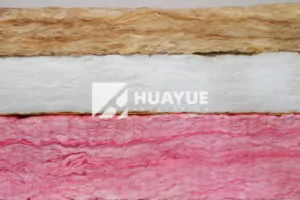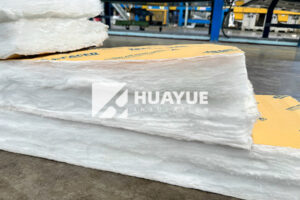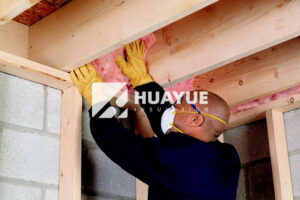What Makes Glass Wool Such an Effective Insulation Material?
When facing rising energy costs and demanding building standards, I often ask myself: what really makes a material stand out as an insulator? Glass wool answers this with science, structure, and versatility.
Glass wool is an insulating material made of glass fibers spun into a fluffy, wool-like texture. Its low thermal conductivity, usually between 0.023 and 0.040 W/m∙K, allows it to resist heat flow—making it a key choice for thermal insulation projects.

If you’ve ever wondered why glass wool works so well and where you should use it, let me walk you through the science, application cases, and factors that inform my choices on building projects.
How Is Glass Wool Manufactured and What Makes Its Structure Unique?
I remember the first time I visited a glass wool production line—the blending of high temperatures, glass, and precision felt both elemental and modern. The process itself is crucial to material performance.
Glass wool is produced by melting glass at roughly 1450°C, then spinning it into thin fibers using high-speed rotating heads—like making cotton candy. These fibers, when bound together, trap air within countless microscopic pockets, drastically reducing heat transfer.
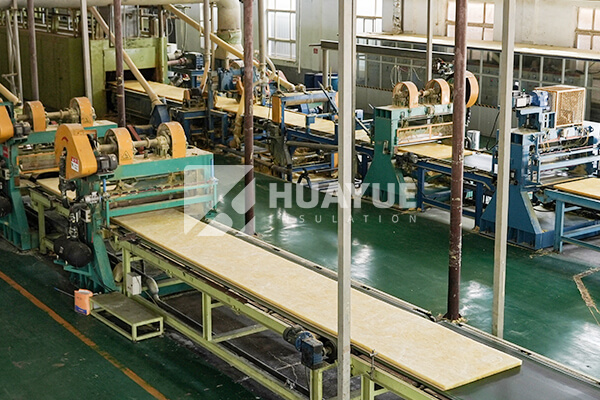
Here’s what’s happening in detail:
Glass Wool Manufacturing Process
| Step | Description |
|---|---|
| Raw Material Mixing | Silica sand, recycled glass, and additives are blended |
| Melting | The mixture is heated to around 1450°C in a furnace |
| Fiberization | Molten glass is spun into fibers by centrifugal force |
| Binding Agent | A binder is sprayed onto the fibers to provide structural stability |
| Forming and Curing | Fibers are collected, shaped into blankets/boards, and heat-cured |
| Cutting & Packaging | The product is cut to size, then packaged for shipment |
The secret lies in the fiber network and its trapped gas pockets. It is these spaces, not just the glass, that limit heat transfer, making the insulation so effective. Simple as it sounds, the result is a highly engineered structure that performs on the job.
What Applications Benefit Most from Glass Wool Insulation?
For years, I have recommended glass wool for more than just home attics. Its uses stretch across buildings, industry, and beyond. Understanding where its strengths shine is vital for making the right material choice.
Glass wool is ideal for thermal and acoustic insulation in walls, pitched roofs, floor structures, HVAC ducts, and even industrial pipe systems. The key is to keep it dry, since moisture raises its thermal conductivity and lowers efficiency.

Let’s break down the main applications:
Major Uses of Glass Wool Insulation
| Application | Function | Key Benefit |
|---|---|---|
| Wall/Ceiling Insulation | Thermal, acoustic | Energy savings, quiet |
| Pitched Roofs | Thermal, soundproofing | Stable indoor climate |
| Floors | Reduces heat loss | Improved comfort |
| Pipes and Ducts | Controls temperature | Prevents energy waste |
| Filtration/Industrial | Air and liquid filters | Particle retention |
I choose glass wool for projects where both safety and efficiency matter. It’s also important to remind clients to protect it from moisture—otherwise, even the best insulation loses value.
Why Is Thermal Conductivity Important When Choosing Insulation?
I have seen many projects miss out on energy savings simply due to not understanding thermal conductivity numbers. This metric is central to any insulation decision.
Thermal conductivity measures how much heat passes through a material. For glass wool, values between 0.023 and 0.040 W/m∙K are typical. The lower this value, the better the insulation. These numbers are readily comparable to competing materials in specifications and tenders.
Let’s look at it more closely:
Understanding Thermal Conductivity (λ) in Insulation
| Material | Typical λ Value (W/m∙K) | Implication |
|---|---|---|
| Glass Wool | 0.023 – 0.040 | Excellent resistance |
| Rock Wool | 0.035 – 0.045 | Good, durable |
| EPS (Polystyrene) | 0.031 – 0.038 | Lightweight, water repellent |
| Polyurethane | 0.024 – 0.028 | Superior, costly |
I recommend glass wool whenever reliable, general-purpose insulation is required. Its high performance comes from trapping numerous air pockets, stopping convection and slowing heat transfer. This makes it a favorite in energy-efficient buildings.
What Differentiates Modern Glass Wool Products in the Market?
Almost every project I manage today demands more than just basic insulation—clients ask about formaldehyde-free options, resistance to fire, and even sustainability. I have seen the product landscape change fast.
Today’s glass wool options include formaldehyde-free types for better indoor air quality, aluminum foil-coated versions for vapor barriers, and high-temperature grades for industrial sites. Custom dimensions, density, and packing increase flexibility for architects and contractors.
In my experience, selecting the right variant ensures compliance with new safety and environmental standards, while still getting reliable insulation performance.
Conclusion
Glass wool combines engineered microstructure, low thermal conductivity, and versatility to solve both simple and complex insulation challenges efficiently.
You may also be interested in:
Ready to Get Started?
Get in touch with our experts for personalized solutions tailored to your needs.
Get Free QuoteLatest Articles
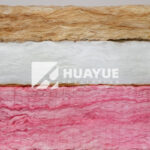
Eco Batt Insulation: What You Need to Know?
Dec 12, 2025
Let's Work Together
Ready to take your business to the next level? Get in touch with our team of experts and let's discuss how we can help you achieve your goals.
Get Free Solutions
